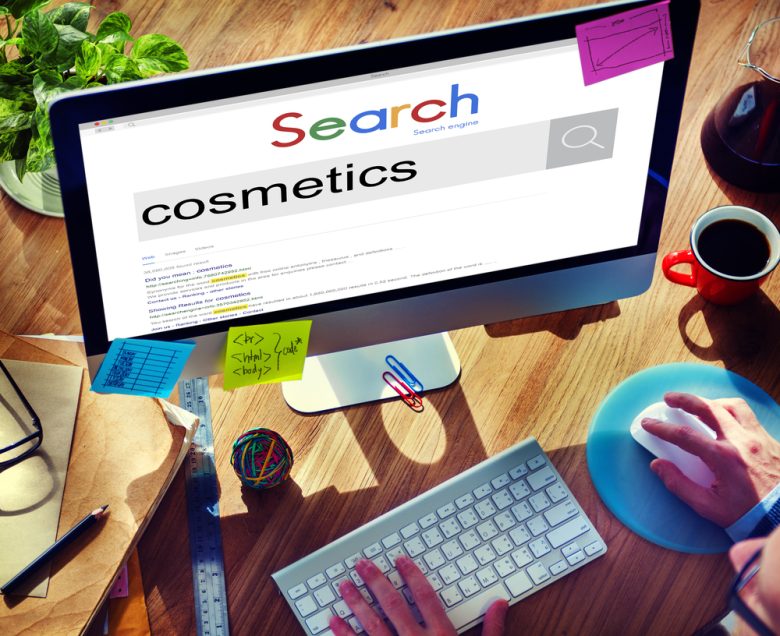The cosmetic industry is highly competitive and having a strong online presence is important for success. One of the most effective ways to increase your visibility and attract potential customers is through search engine optimisation (SEO). By optimising your cosmetic website for organic traffic, you can improve your search engine rankings, drive more visitors to your site and ultimately boost your sales.
In this article, we’ll explore the secrets of cosmetic SEO and how you can use them to enhance your digital marketing efforts.
Understanding the Role of SEO in the Beauty Industry
SEO is an integral part of digital marketing for the beauty industry. It involves optimising your website and its content to rank higher in search engine results pages (SERPs) for relevant keywords.
For cosmetic brands, this means targeting keywords related to your products, services and industry, such as “cosmetic digital marketing,” “SEO for the beauty industry,” and “SEO for aesthetic clinics.” By ranking higher for these keywords, you can attract more organic traffic to your website, increasing your chances of converting visitors into customers.
Keyword Research
The first step in optimising your cosmetic website for SEO is conducting thorough keyword research. Identify the terms and phrases that potential customers are using to search for products or services similar to yours. Tools like Google Keyword Planner, SEMrush and Ahrefs can help you discover relevant keywords, including “SEO for beauty brands” and “digital marketing roles in the beauty industry.”
Once you have a list of target keywords, you can start incorporating them into your website’s content, meta tags and URLs to improve your visibility in search results.
On-Page Optimisation
Content is king in the world of SEO and this holds true for cosmetic websites as well. Create high-quality, informative and engaging content that addresses the needs and interests of your target audience.
Use your keywords naturally throughout your content, including in headings, subheadings and body text.
Additionally, optimise your images and videos by using descriptive file names and alt tags that include your keywords. This not only helps with SEO but also enhances the user experience on your website.
Off-Page Optimisation
Off-page optimisation involves activities outside of your website that can impact your Cosmetic website SEO. One of the most important off-page factors is backlinks, which are links from other websites to yours. Having a strong backlink profile indicates to search engines that your website is authoritative and trustworthy.
You can build backlinks by guest blogging, collaborating with influencers and getting featured in industry publications. Focus on acquiring links from reputable sites in the beauty industry to boost your website’s credibility and search engine rankings.
Technical SEO
Technical SEO involves optimising the backend of your website to improve its performance and user experience. This includes ensuring that your site is mobile-friendly, as more and more users are accessing the internet on their smartphones.
Additionally, improve your website’s loading speed, as slow-loading pages can negatively impact your cosmetic website SEO and drive visitors away. Use tools like Google’s PageSpeed Insights to identify areas for improvement and make the necessary changes to enhance your site’s performance.
Local SEO
If your cosmetic business has a physical location, such as an aesthetic clinic or a beauty store, local SEO is important. Optimise your website for local search by including your business’s name, address and phone number (NAP) on your site and in online directories.
Create a Google My Business listing to appear in local search results and Google Maps. Encourage satisfied customers to leave reviews, as positive reviews can boost your local SEO and attract more customers to your business.
Monitoring and Adjusting Your Strategy
Cosmetic website SEO is an ongoing process and it’s important to monitor your website’s performance and adjust your strategy as needed. Use tools like Google Analytics and Google Search Console to track your traffic, rankings and other key metrics. Analyse this data to identify areas for improvement and make data-driven decisions to optimise your website further.
The Next Step
Optimising your cosmetic website for SEO requires a comprehensive approach that includes keyword research, on-page and off-page optimisation, technical SEO and local SEO. By implementing these strategies and continuously monitoring and adjusting your approach, you can improve your search engine rankings, attract more organic traffic and grow your cosmetic business in the competitive digital landscape.
Ready to elevate your cosmetic website’s SEO? Contact Haarty Hanks today and take the first step towards a stunning online presence!





Comments
Pingback: Simple SEO Hacks to Maximise Your Cosmetic Website's Reach
Pingback: 7 Essential On-Page SEO Factors You Need To Know